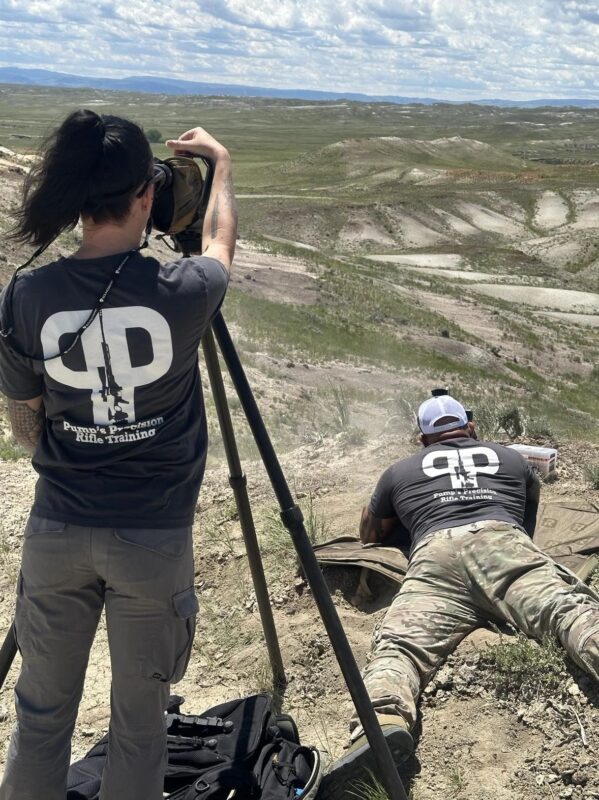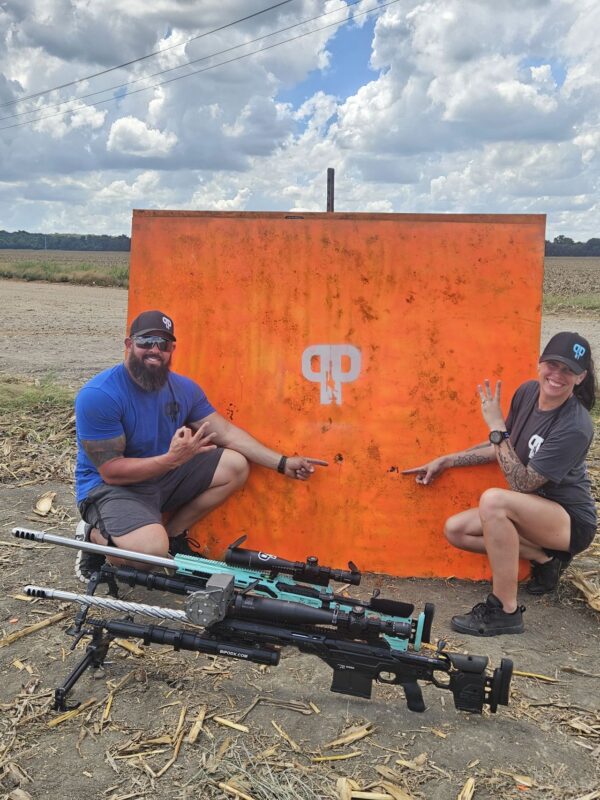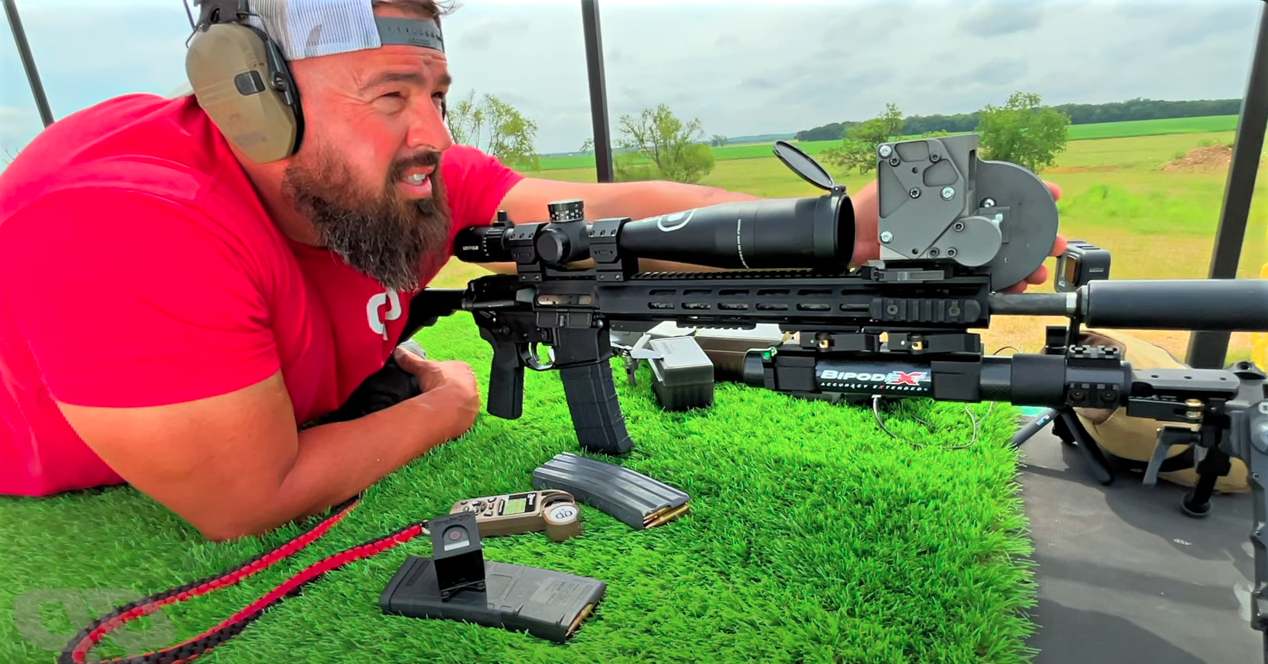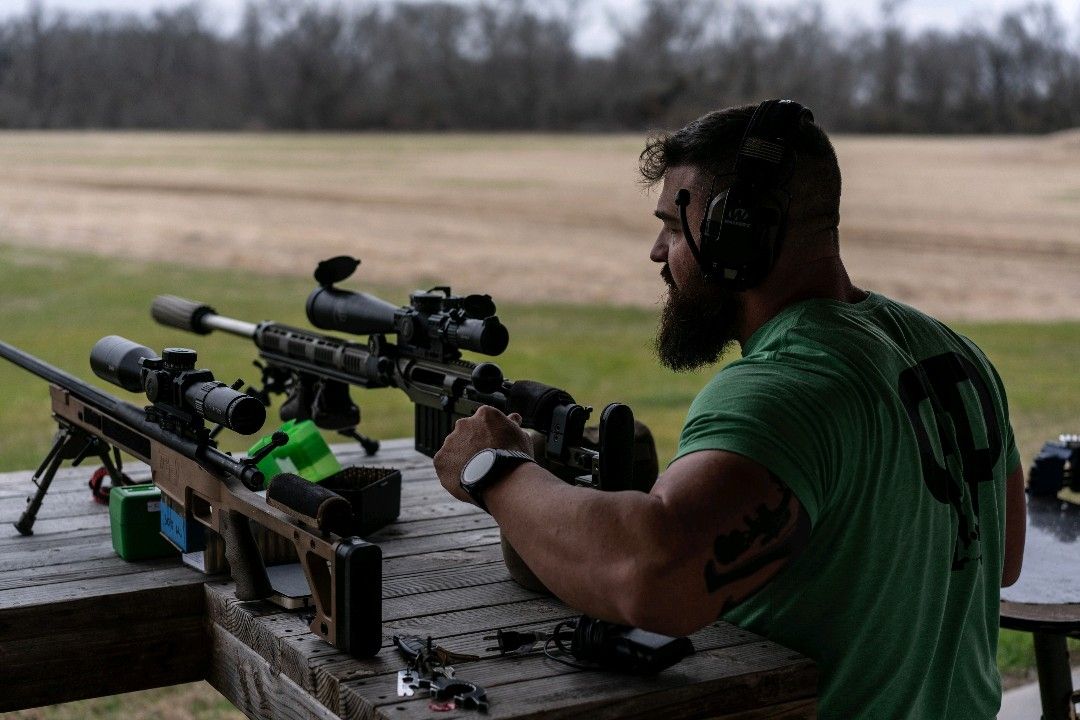HOP Blog
Inside the Mind of an ELR Shooting Champion: How Chase Stroud Pushes the Limits of Precision Shooting
Chase Stroud is a prominent figure in Extreme Long-Range (ELR) shooting. He has been actively involved with some of the most respected names in the industry, including David Tubb’s team, G2 Precision, and Leupold. Until recently, he was also an Applied Ballistics Extreme Long Range Shooting Team member. Chase has established himself as a leader in the field with an impressive track record of eight major match wins, over a dozen top 3 finishes, and countless top 10 placements. Despite his busy schedule, he participates in one to two ELR shooting matches yearly.
Chase was one of the pioneers in shooting beyond 2 miles in 2010 and has played a significant role in pushing the boundaries of what is possible in ELR shooting. His coaching expertise has led service members to top 10 finishes in the International Sniper Competition, and he has helped numerous shooters achieve impacts beyond 2 miles and even 4 miles. His passion for the sport is evident not only in his competitive achievements but also in his commitment to training others.
At Pumps Precision Rifle Training, Chase offers highly customized training packages tailored to individual needs, goals, and experience levels. Whether a novice or an experienced shooter, Chase’s classes provide the ideal environment for maximizing your skills.

In this interview, Chase shares invaluable insights into his training philosophy and the future of Pumps Precision Rifle Training.
If you had to choose one movie to watch 500 times in a row, what would it be?
I’m not a big TV or movie watcher, so there’s no single movie I would torture myself with 500 times, ha!
The zombie apocalypse kicks off and you have to choose one shooter from the industry to stand shoulder to shoulder with, who would it be?
Nate Stalter, owner of Schneider Barrels and former Dev Group Gold Squadron operator.
Favorite EDC pistol and why?
Full-size 2011 because my hands are the size of catcher’s mitts!
What was your first long-range rifle?
A Remington 40X .308 that my grandfather had custom-built for me.
.308 vs 6.5 Creedmoor… if you had to pick one, which one would you choose and why?
6.5 Creedmoor because it has less drop, less wind drift, and carries more energy on target.
Have you worked with any special operations units or government agencies?
Yes, but that goes without saying. I cannot mention them.
You’ve tested some of our ammo, including the 147gr 9mm and the 77gr .223. What do you think of those loads, specifically the 77gr .223 load?
I’ve never shot any factory ammunition that has performed as well as HOP’s. It had the best grouping and extreme spreads I’ve seen. I shot the 77-grain HPBT out to 1800 yards with very good consistency.
The 9mm ammo also had better extreme spreads than most center-fired rifles.
You’ve been at the forefront of Extreme Long-Range (ELR) shooting for over a decade. What initially drew you to this discipline, and what motivates you to continue pushing the boundaries of what’s possible?
My initial interest in ELR came from curiosity about how far we could push a rifle with the limited optics we had in the late 90s and early 2000s. What keeps me going today is understanding every part of the ELR equation and all the advancements, which allow me to keep pushing the limits even further.
With multiple match wins and top finishes, how has your approach to competition evolved over the years? Are there specific lessons from your competitive experience that you incorporate into your training programs at Pumps Precision?
Considering everyone has equal access to the same equipment, it all boils down to the competitor’s mindset. The top 3 factors for a championship are equal parts rifle, ammunition, and mindset. I don’t compete as much as I used to, averaging only 1-2 matches yearly.

I’m focused on building my company and making money rather than spending it. For my classes, I emphasize that ‘groupthink’ is detrimental—you can’t learn effectively by following someone else’s ideas or comparing yourself to them. I specialize in teaching individuals how to maximize their current equipment, whereas most trainers use a large class, cookie-cutter approach.
You’ve coached service members to top 10 finishes in the International Sniper Competition and helped numerous clients achieve impacts beyond 2 miles. What do you believe is the most crucial element for success in ELR shooting, both for competitors and enthusiasts?
For ELR success, it really boils down to how consistent your ammunition is and your ability to read the wind. There are also many ‘cheat codes’ in ballistic solvers that you need to know to have confident first-round impacts at 2+ miles.
Your wife became the first female to hit 3 miles under your coaching. Can you share more about that experience and what it meant to you both personally and professionally?
We were actually doing R&D for a new projectile. I had Lauren on the shooting tower with her rifle while I was downrange, forward observing from a safe distance to call her wind and corrections. We weren’t sure of the bullet’s predictability when it went transonic, but after seeing it perform well at 2 miles, we stretched it out to 3 and made it happen. It was a huge accomplishment for her as a novice in the industry and made me proud to see her capability, even with my help. This past August, she, myself, and one of our clients, Ari Ginian, all made impacts at 3 miles with less than 10 shots each. It was special for us to show the repeatability and success with three different shooters.

You offer highly customized training packages at Pumps Precision Rifle Training. How do you approach designing a training program for someone new to ELR shooting versus an experienced shooter looking to refine their skills?
I actually prefer new shooters because they don’t have any training scars or bad habits. Across the board, I’ve had to change the fundamentals for everyone who has claimed to ‘know how to shoot.’
Load development and custom ammunition are a big part of your services. Can you walk us through the process of how you fine-tune a client’s rifle and ammo to maximize performance?
This is proprietary information to me, and I also don’t want someone trying to duplicate a recipe that was meant for one gun and can be unsafe in another. Each barrel is a unicorn and must be treated as such, which is why factory ammo works better in some rifles and not as well in others.
Having been one of the first shooters to go beyond 2 miles back in 2010, what technological advancements have you seen in equipment and ballistics since then, and how have they impacted the sport of long-range shooting?
There are way too many to list, but here are my top three major game-changers:
- Tacom-HQ Charlie Tarac – elevation adder, 0-240 mils external elevation
- Applied Ballistics Ballistic Solvers – custom drag models
- Component Technology – much better extreme spreads

For those looking to take their long-range shooting skills to the next level, what common misconceptions or mistakes do you see people making, and how can they avoid them?
Avoid large online forums where very few subject matter experts will waste their time. You’re getting advice from keyboard warriors more often than not. This is a sport where you get what you pay for—buy once, cry once. Save up to get what you really want, and don’t cut corners. I offer consulting services just for this, to help people build a rifle correctly and to their actual needs. If you don’t have access to a long-range facility, I encourage people to take up .22 long-range shooting to fill the gap in their training needs. Shooting at 200 yards with a .22 is similar to shooting 1000 yards with a 6mm.
What’s next for Pumps Precision Rifle Training? Are there any upcoming projects, courses, or innovations that you’re particularly excited about?
My wife, Lauren, and I have always had the goal to give back to the community, specifically, our Veterans struggling with PTSD, and to host an ELR Match. We are currently planning an event that does both.
We have recently been added to the Board of Mend the Heart Foundation, a non-profit helping our veterans for many years. Pumps Precision Rifle Training has partnered with Mend the Heart Foundation, G2 Precision, and Core Medical Group to host an epic ELR Competition Fundraiser Event on May 7th and 8th, 2025. There will be 10 teams of 3, consisting of one Pro-Shooter, one A-List Veteran, and one Celebrity, competing against each other and raising money for our veterans.
Mend the Heart Foundation is taking it to the next level by building hubs for themselves and other non-profits to send Veterans for outdoor therapies and in-house treatments that will help them long-term. We are excited to host this event and look forward to the good it will bring to our Veterans. We are currently seeking people to donate and sponsor now.
RELATED – Master Long-Range Precision with Pumps Precision Rifle Training
Conclusion
Chase Stroud’s journey from breaking boundaries in Extreme Long-Range shooting to coaching the next generation of long-gun shooters is nothing short of legendary. His relentless pursuit of precision and excellence and his dedication to passing on his hard-earned knowledge have made him a respected figure in the shooting community.
Whether he’s pushing the limits of what’s possible in ELR, helping his wife make history with a 3-mile shot, or designing custom training programs for shooters of all levels, Chase brings unmatched expertise and passion to everything he does.
But Chase’s story goes beyond personal accolades and impressive feats. His commitment to giving back, especially to the veteran community, underscores the core values that define Pumps Precision Rifle Training. Don’t miss the opportunity to train with one of the best in the business.

